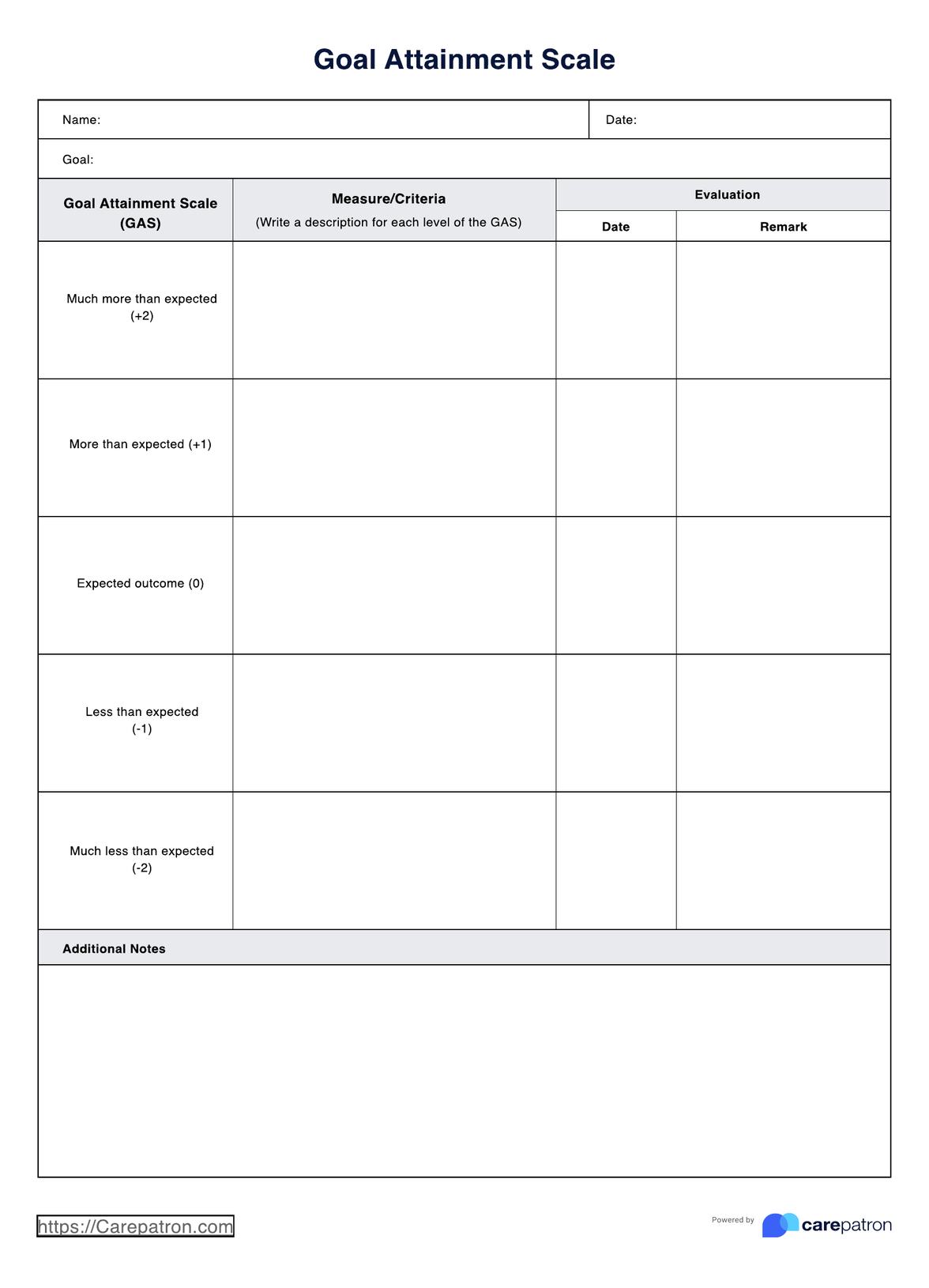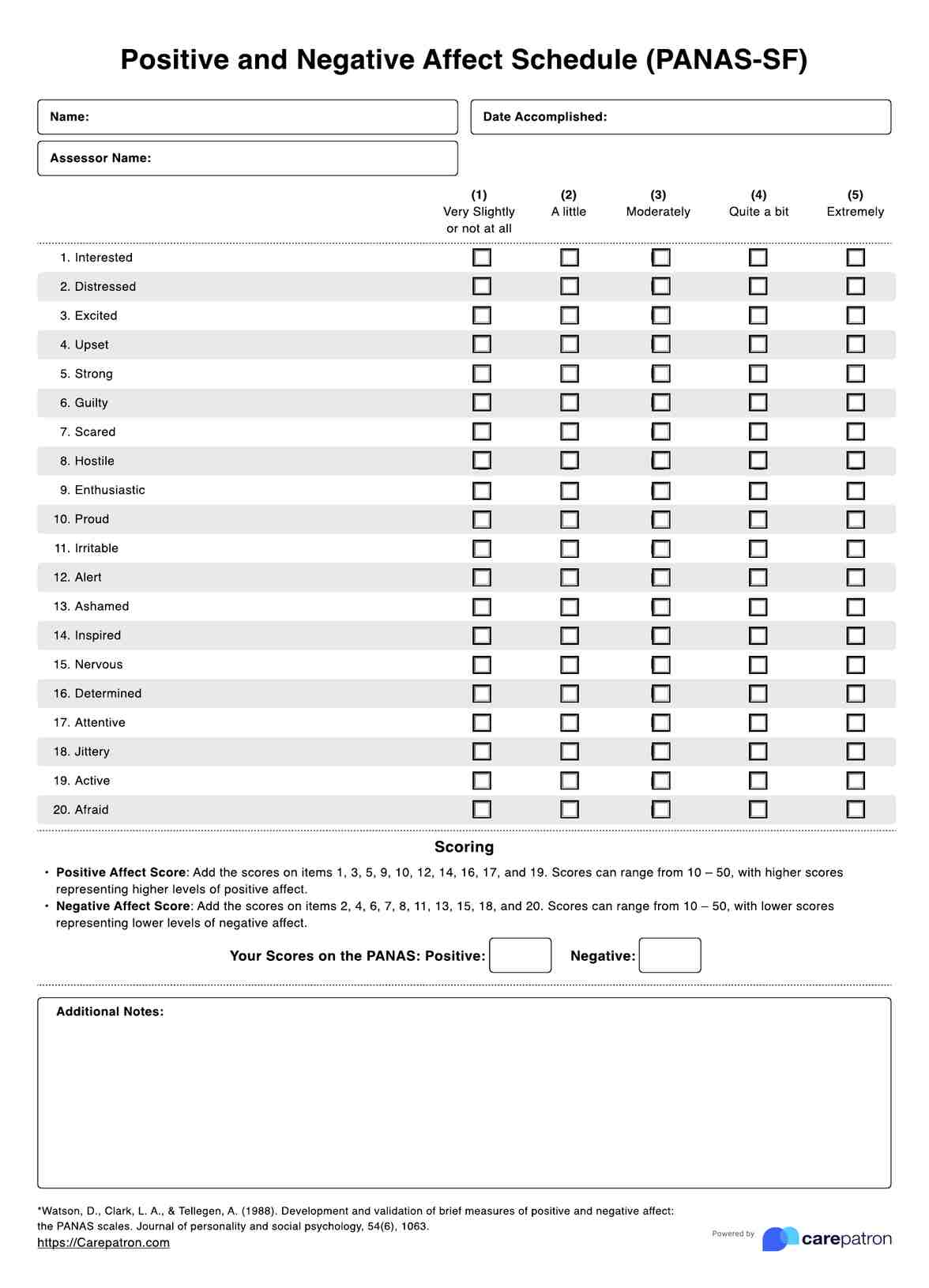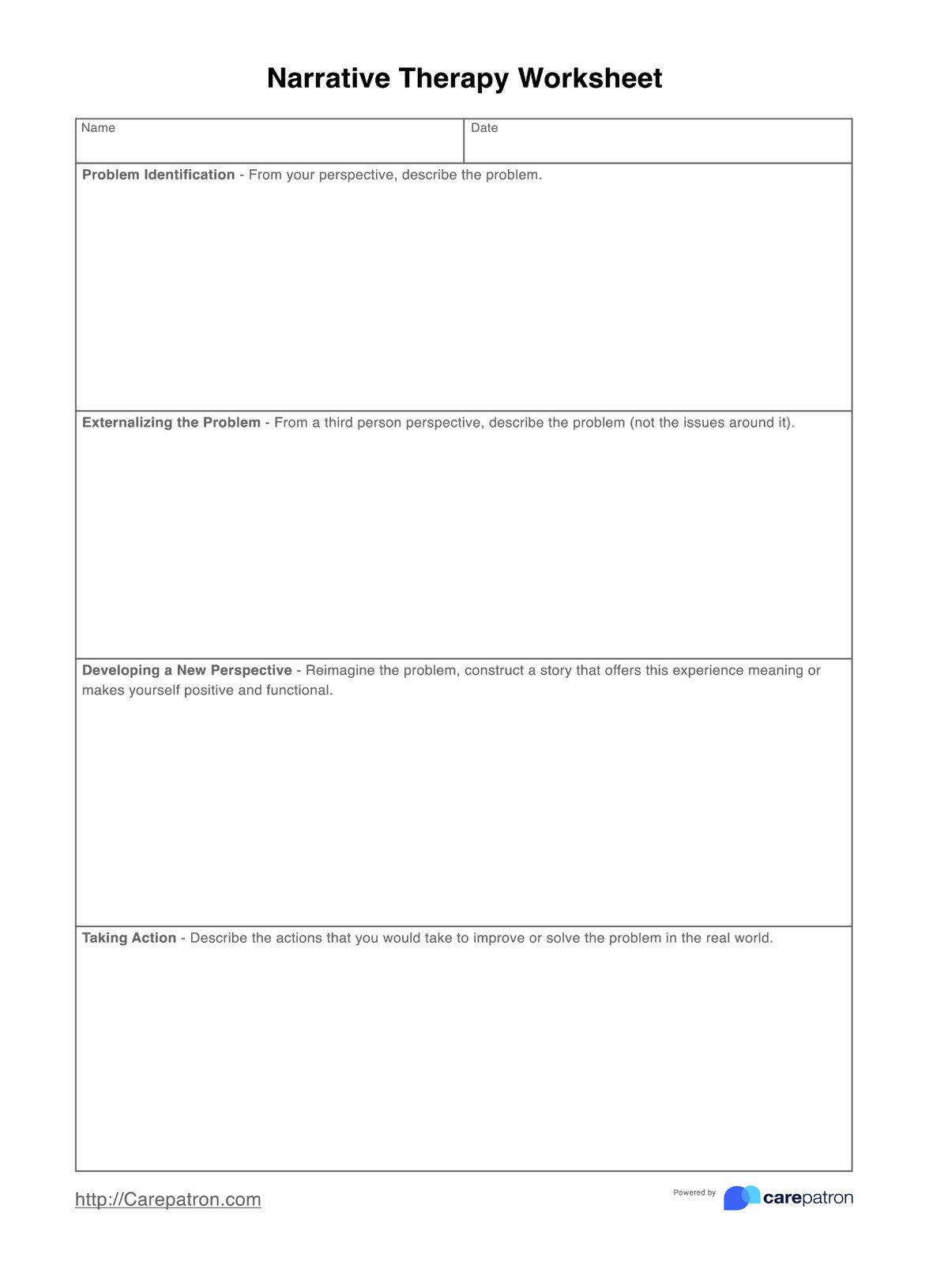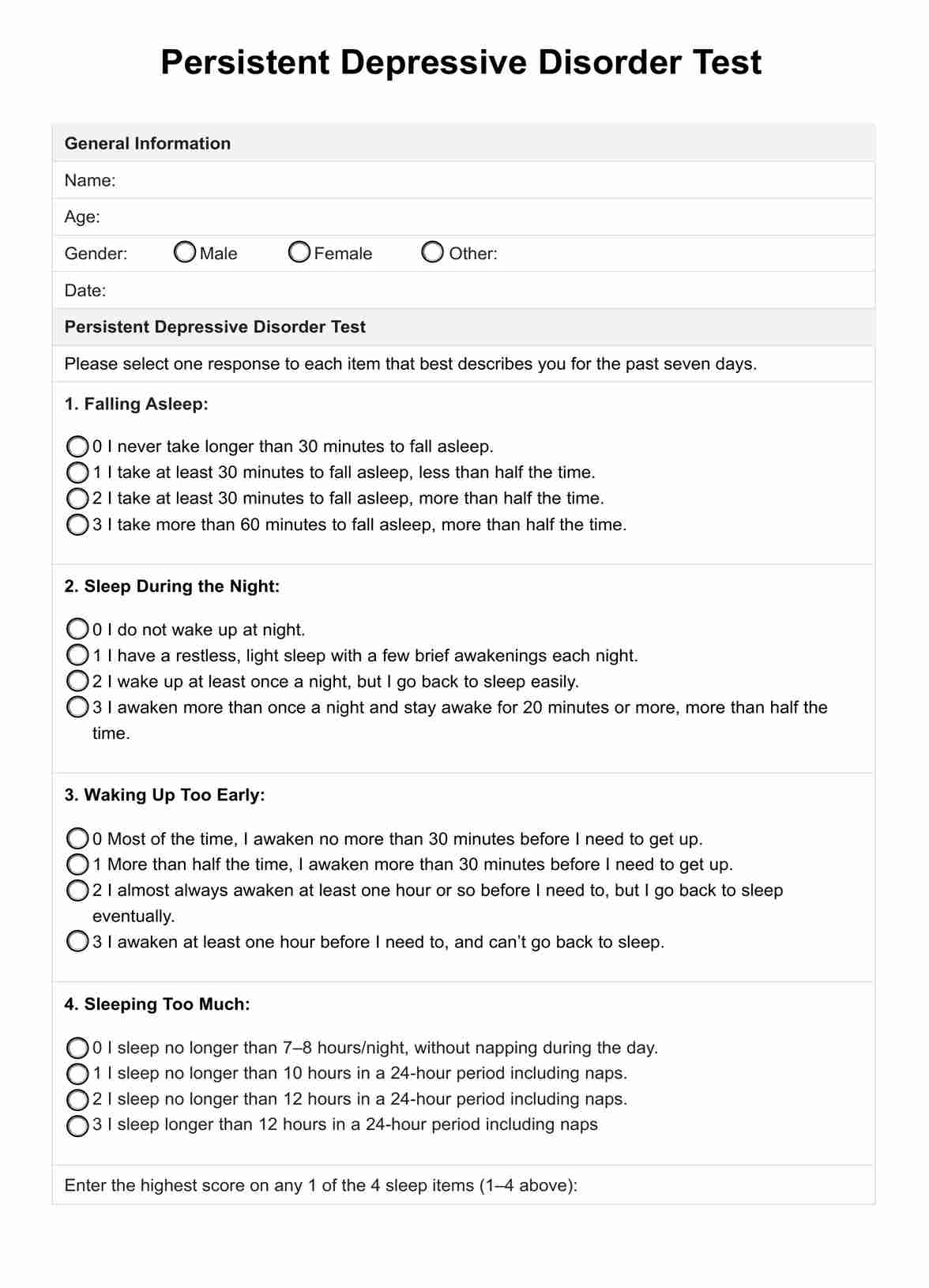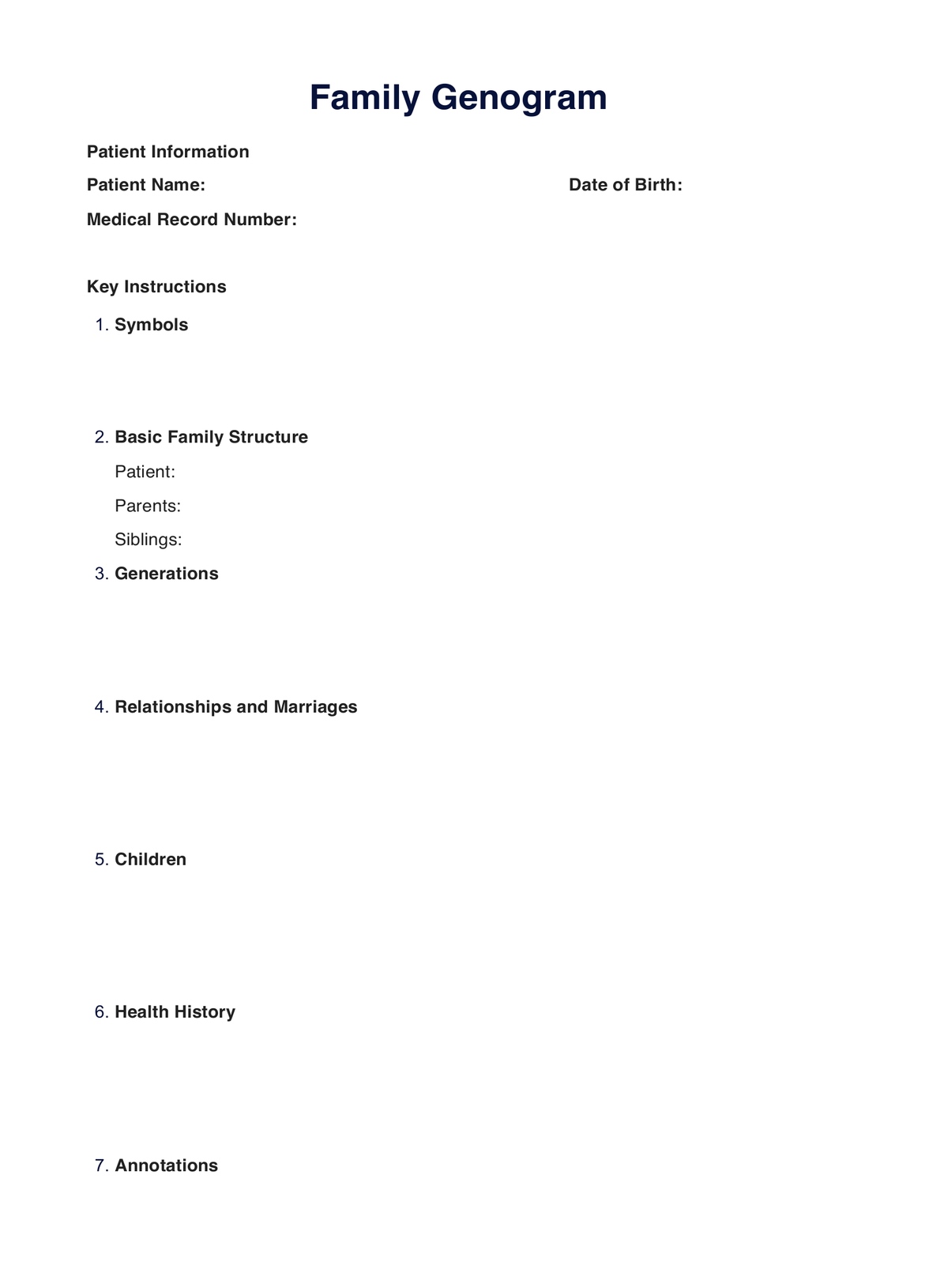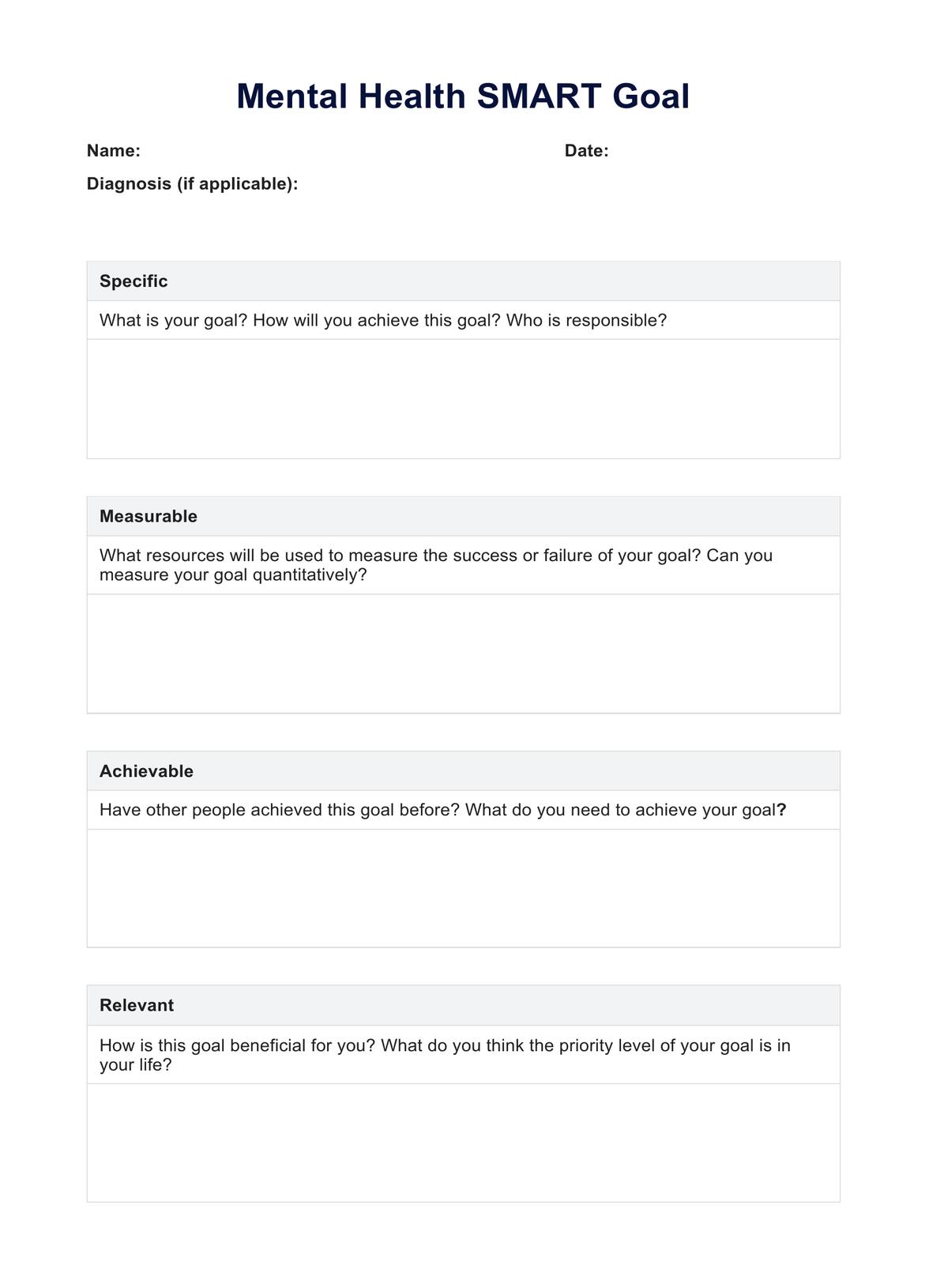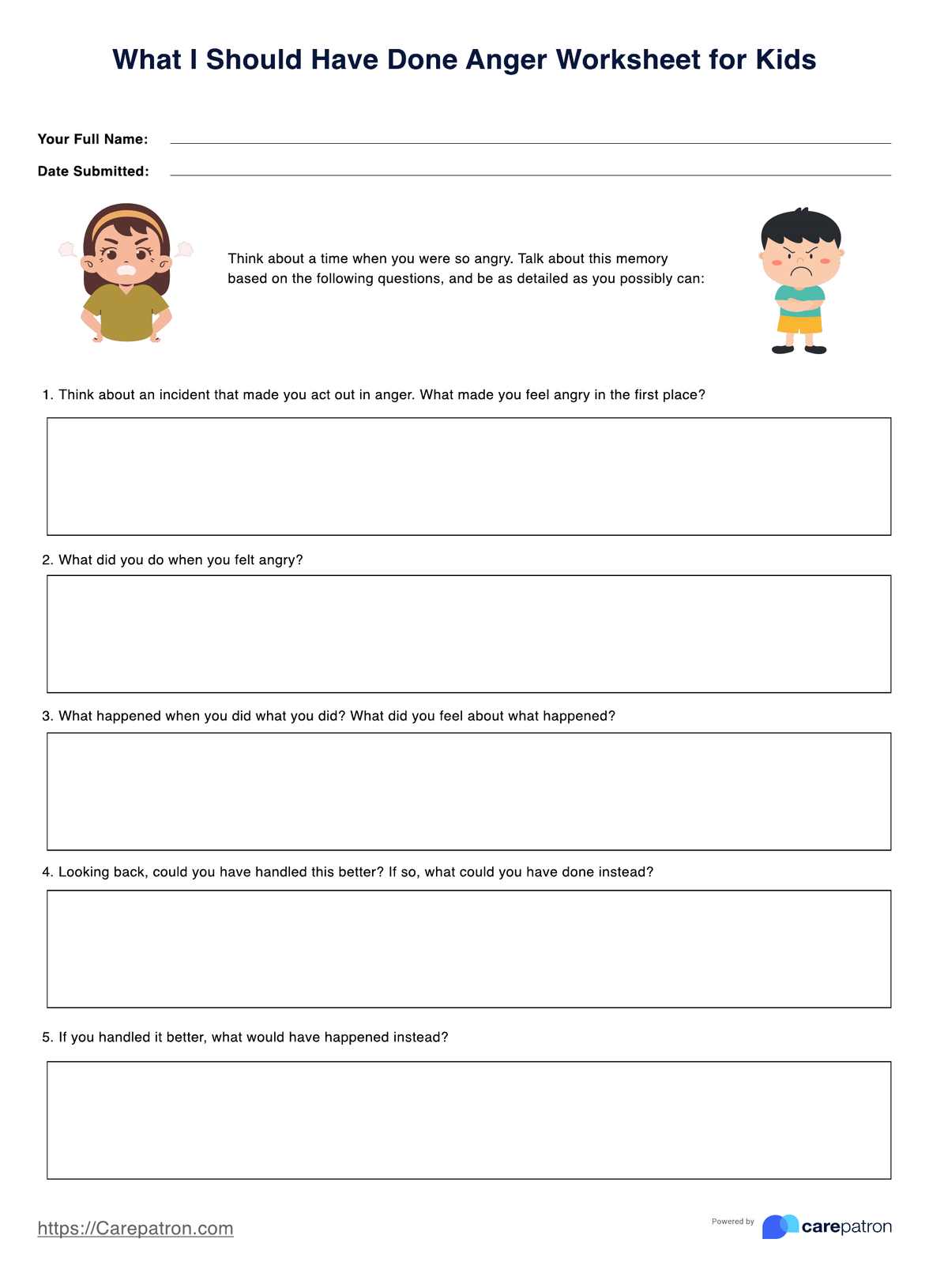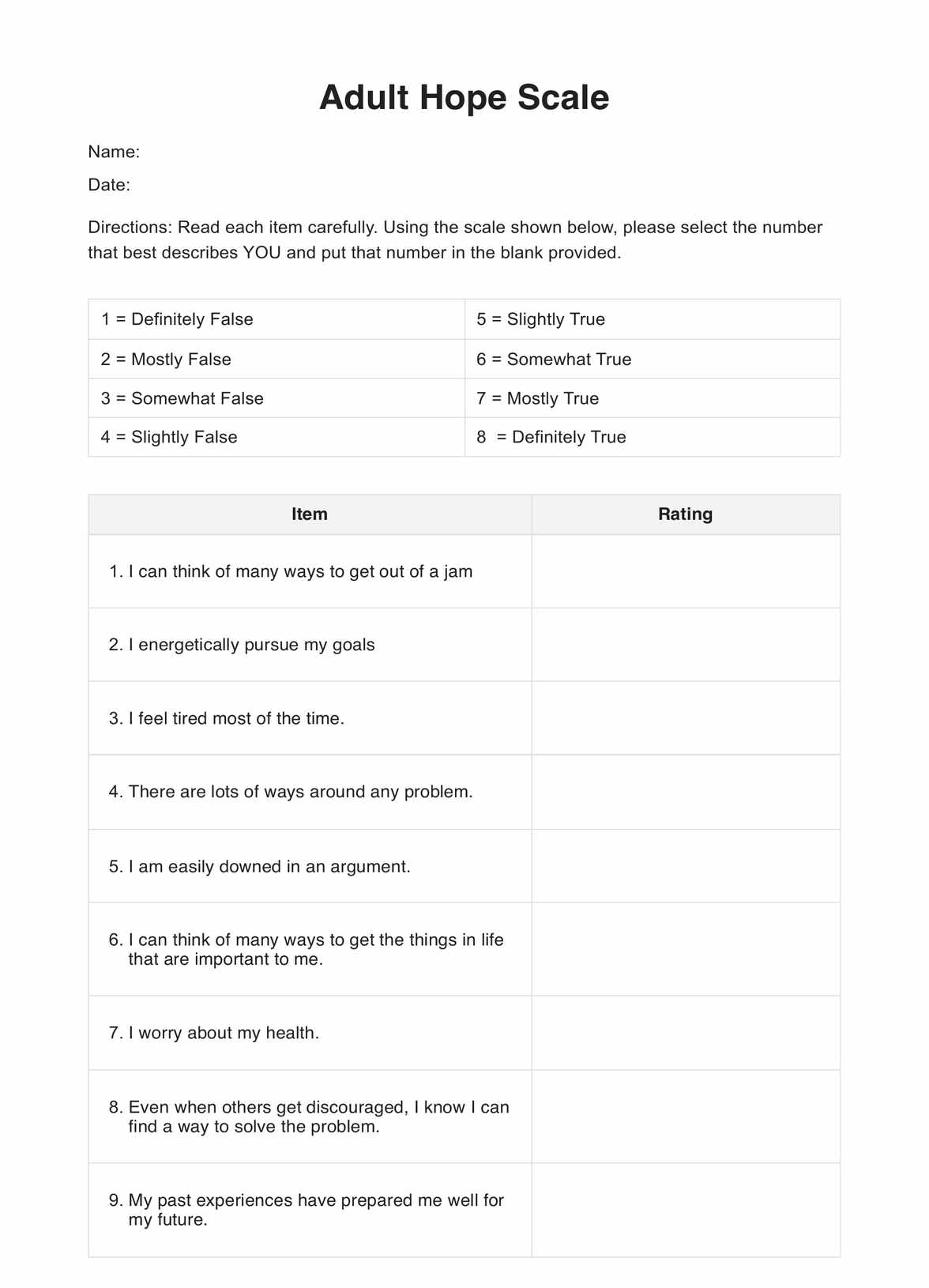Selfie Diary PTSD Worksheet
Embrace self-reflection and manage PTSD effectively with the Selfie Diary PTSD Worksheet. A tool designed to help identify triggers and track progress.


What is Trauma and PTSD?
Trauma is an umbrella term for profoundly distressing or disturbing events resulting in significant emotional, psychological, and physical harm. These traumatic experiences can be singular, one-time incidents such as severe accidents, natural disasters, or violent attacks. Alternatively, they can be recurrent experiences that persist over time, such as prolonged abuse, exposure to combat, or living in a war-torn region. The nature of these events often threatens an individual's life or safety or that of those around them, leaving a lasting impact on their mental well-being.
The aftermath of experiencing trauma can lead to the development of post-traumatic stress Disorder (PTSD), a debilitating mental health condition. PTSD occurs when the response to a traumatic event continues long after the event has ended. Instead of gradually healing and returning to normality, individuals with PTSD remain psychologically shocked. Their memories of the event and associated feelings remain as vivid and distressing as if they were still amid the trauma.
PTSD manifests in several ways and can significantly interfere with an individual's daily life. Symptoms include recurrent, intrusive recollections of the traumatic event, often experienced as vivid flashbacks or nightmares. These are not mere memories but intense, repeated trauma relivings. Individuals with PTSD may also exhibit heightened anxiety, hypervigilance, difficulty sleeping, and are besieged by relentless, uncontrollable thoughts about their traumatic experience.
One prevalent symptom among those grappling with PTSD is depersonalization. This involves a disturbing feeling of detachment or disconnection from oneself. It's like observing one's life from an external vantage point, almost as if what they're experiencing isn't real or is happening to someone else. This sense of unreality can be incredibly distressing, adding a layer of distress to their struggles.
Depersonalization can exacerbate the individual's anxiety and fear, potentially hindering their treatment and recovery process. It can make it difficult for them to connect with their emotions or to engage fully in therapy. Understanding and addressing this symptom is a crucial part of the therapeutic process.
PTSD, including its associated symptoms like depersonalization, requires professional medical attention and structured therapeutic interventions. It is important to seek help if you or someone else is experiencing signs of PTSD. For further information on this subject, resources for managing PTSD, and options for treatment, our PTSD resources.
Selfie Diary PTSD Worksheet Template
Selfie Diary PTSD Worksheet Example
How to use the Selfie Diary PTSD Worksheet:
The Selfie Diary PTSD Worksheet is designed to aid those with PTSD; this worksheet serves as a personal tracker that helps monitor symptoms, identify triggers, and strategize effective coping mechanisms. Here's how you can make optimal use of it:
Step 1: Document Daily Experiences
Begin by recording your daily experiences in the Selfie Diary PTSD Worksheet. Note any symptoms or signs of PTSD you encounter throughout the day. This could include heightened anxiety, flashbacks, nightmares, or feelings of depersonalization. Simultaneously, attempt to identify any triggers – situations, people, or thoughts – that may have precipitated these symptoms. Remember, no detail is too small; everything counts when understanding your unique experience with PTSD.
Step 2: Periodic Reflection
Don't just fill in the worksheet and forget about it. Instead, set aside some time every week to reflect on the entries you've made. Look for patterns or trends in your experiences. Are certain symptoms more prevalent? Do specific triggers often lead to increased distress? This step is about gaining insights into your personal experience with PTSD, which will be instrumental in planning your recovery.
Step 3: Strategize and Plan
The next step is to plan strategies for managing your PTSD symptoms. This might involve brainstorming ways to avoid identified triggers or developing coping mechanisms for when avoidance is not possible. The goal is to use the knowledge gained through the Selfie Diary PTSD Worksheet to empower you in your fight against PTSD.
Remember, while our printable Selfie Diary PTSD Worksheet is powerful, it does not replace professional help. It is most effective when used as part of a comprehensive treatment plan under the guidance of a healthcare professional. Contact a mental health professional if you're struggling with PTSD – you don't have to face this alone.
When Would you use this Selfie Diary PTSD Worksheet?
The Selfie Diary PTSD Worksheet is a versatile tool that can be utilized in various scenarios, individually and in conjunction with professional mental health care. This tool is designed to provide crucial insights into your personal experience with Post Traumatic Stress Disorder (PTSD), making it an invaluable asset in different stages of your recovery journey.
One of the most effective ways to use the Selfie Diary PTSD Worksheet is as part of your daily self-care routine. Regularly documenting your mood, symptoms, triggers, and coping strategies can provide a clear snapshot of your day-to-day experiences with PTSD. This consistent tracking can help you identify patterns over time, which is particularly beneficial during the early stages of your treatment when understanding your unique reaction to trauma is essential.
In addition to individual use, this worksheet can also be utilized as a communication tool during therapy sessions with a mental health professional. Sharing your entries can give your therapist a more in-depth understanding of your experiences, aiding them in tailoring a treatment plan that addresses your needs. It can also facilitate open and honest discussions about your symptoms and struggles, fostering a stronger therapeutic relationship.
Healthcare professionals can also find the Selfie Diary PTSD Worksheet beneficial. By encouraging patients to use this tool, they can gain real-time insights into their patients' experiences outside the therapy room. This can inform adjustments to treatment plans, ensuring that the approach remains responsive to the patient's evolving needs.
The Selfie Diary PTSD Worksheet is a powerful tool for managing PTSD. Whether used independently as part of a self-care routine, in therapy sessions, or by healthcare professionals seeking to enhance patient care, it can be crucial in navigating recovery.
Also, implementing the PTSD worksheet template helps streamline the assessment of post-traumatic stress disorder symptoms, providing valuable insights into clients' experiences. It assists in creating focused treatment plans, ensuring more effective management and support for individuals dealing with trauma.
What are the Benefits of Using this Selfie Diary PTSD Worksheet?
Our free Selfie Diary PTSD Worksheet is a tool and a companion in your recovery journey from Post Traumatic Stress Disorder (PTSD). Here are some significant benefits of using this free resource:
Encourages Self-Reflection
One of the primary advantages of the free Selfie Diary PTSD Worksheet is its ability to encourage self-reflection. As you document your daily experiences, you are empowered to identify and understand your triggers better. This process of introspection can lead to a more profound understanding of your unique experience with PTSD, equipping you to manage your symptoms more effectively.
Reveals Patterns and Trends
Regularly using the worksheet can reveal patterns and trends in your symptoms and responses. Over time, this can provide valuable insights into how your PTSD manifests and what factors might exacerbate or alleviate your symptoms. These insights can guide your recovery journey, helping you develop more effective coping strategies and avoid potential triggers.
Enhances Communication with Healthcare Providers
Sharing your Selfie Diary PTSD Worksheet with your therapist or healthcare provider can significantly enhance communication. By providing them a glimpse into your daily experiences, they gain a deeper understanding of your struggles and victories. This can ensure they fully understand your experiences, leading to more personalized and effective treatment plans.
While there doesn't appear to be specific research discussing the benefits of the Selfie Diary PTSD Worksheet, numerous studies have highlighted the value of self-monitoring and journaling for mental health recovery. For example, a study published in the Journal of Clinical Psychology found that self-monitoring can effectively manage anxiety and depression symptoms, which often accompany PTSD.
Our free Selfie Diary PTSD Worksheet is a powerful tool that promotes self-reflection, reveals insightful patterns, and enhances communication with healthcare providers - all crucial components of successful PTSD management.
Commonly asked questions
It varies per individual but typically takes about 15-30 minutes daily.
A Selfie Diary PTSD Worksheet aids in tracking symptoms, identifying triggers, and planning coping mechanisms.
Our Selfie Diary PTSD Worksheet can be used daily in your self-care routine or during therapy sessions.

.jpg)
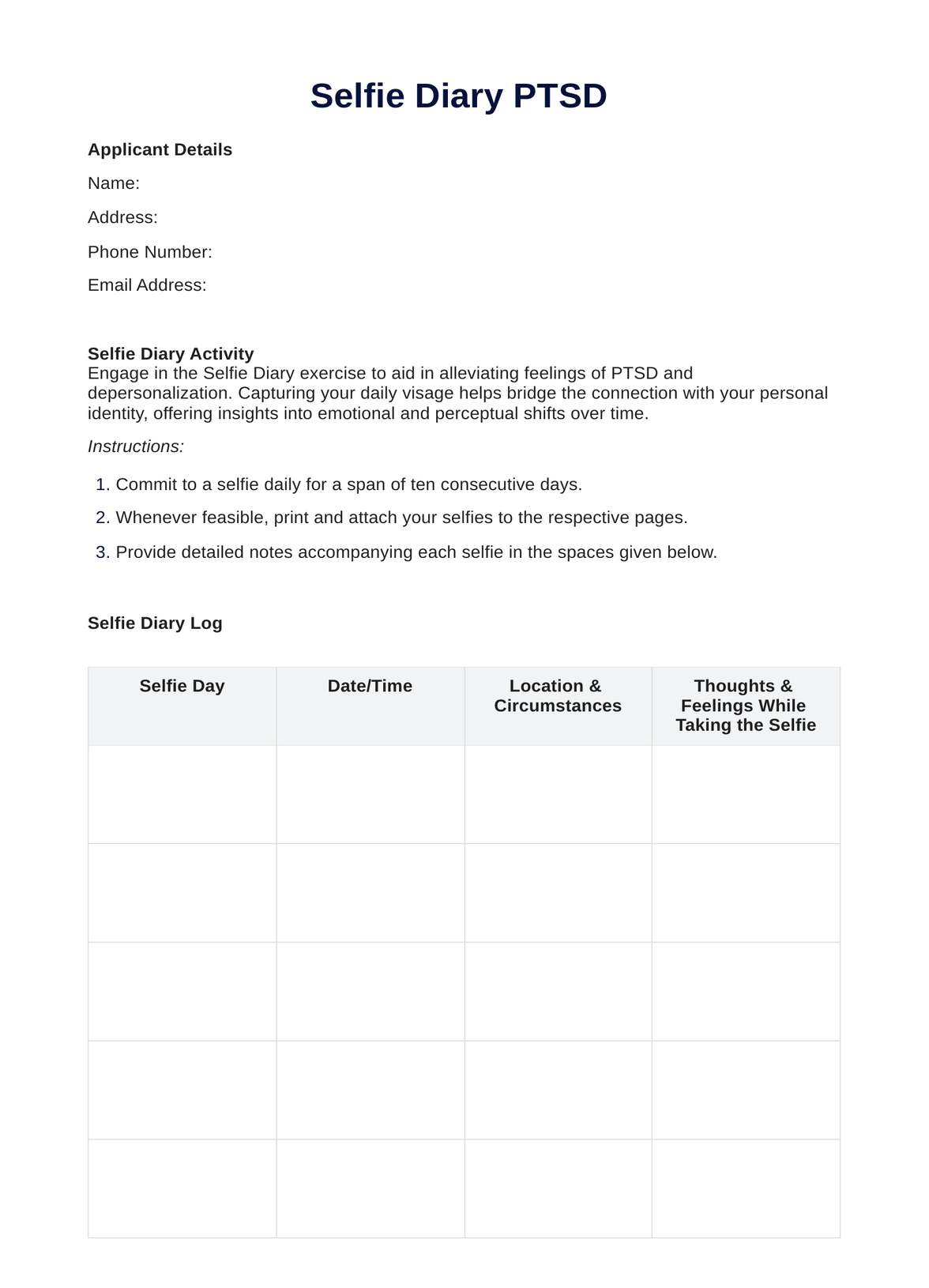
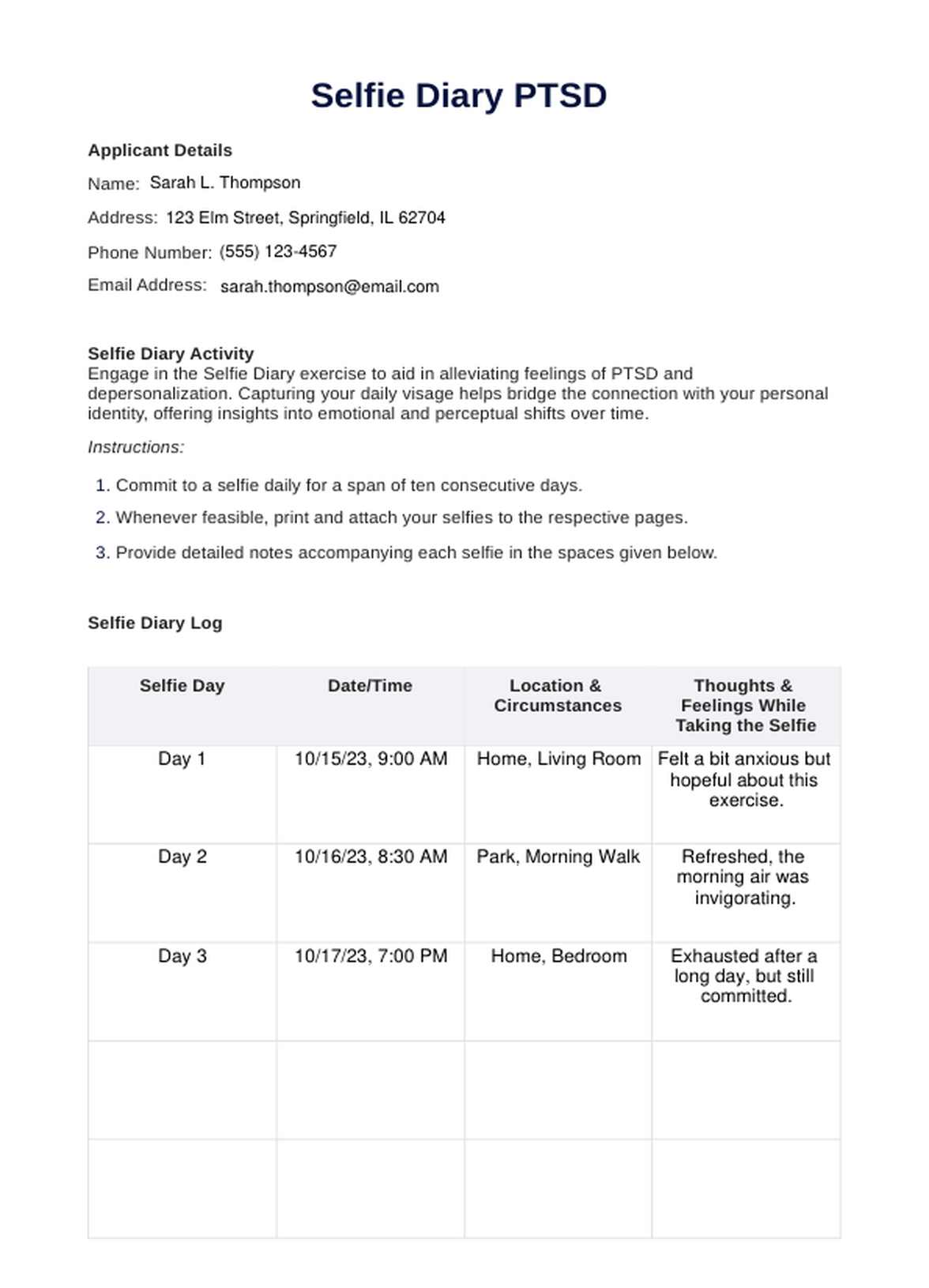
















-template.jpg)




















































































